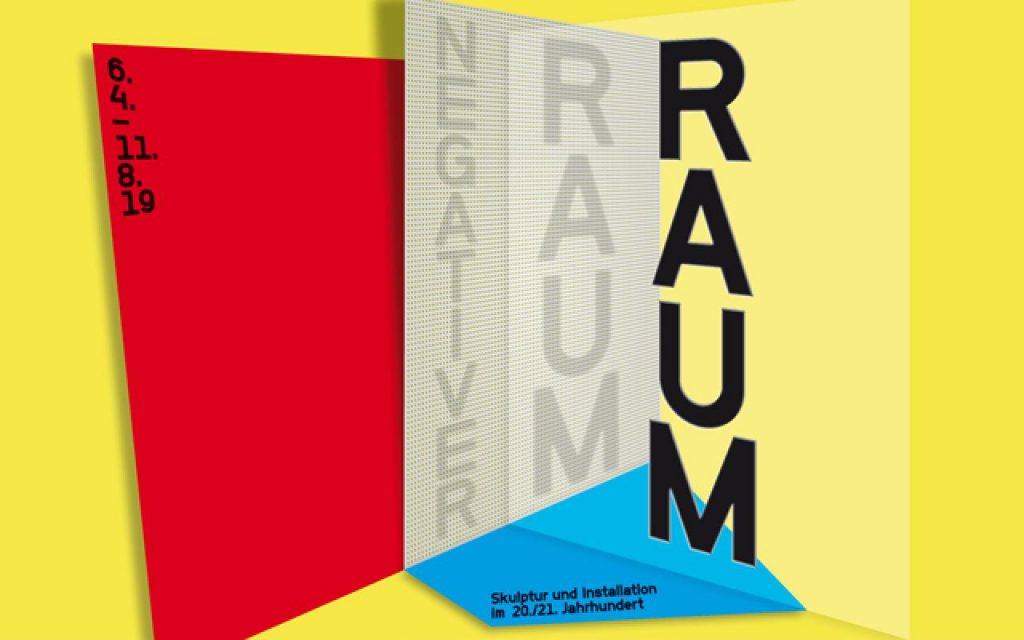Negative Space Trajectories of Sculpture
ZKM Museum has invited the Estate of Buky Schwartz to participate in its upcoming exhibit Negative Space Trajectories of Sculpture that will take place 06.04.2019–11.08.2019, ZKM_Atrium 1+2. Buky’s featured pieces will be Videoconstructions segment 5 (1978) and The Chair (1980).
The following details the official press release from ZKM Museum in Germany:

The last exhibition, which dealt comprehensively with the question
“What is modern sculpture?”, took place in 1986 at the Centre Georges Pompidou in Paris under the title »”Qu’est-ce que la sculpture moderne?”. The exhibition Negative Space at ZKM | Karlsruhe picks up the spear where the Centre Pompidou dropped it. Since antiquity, the history of Western sculpture has been closely linked to the idea of the body. Whether carved, modeled or cast, statues have been designed for centuries as solid monoliths – as substantial and self-contained entities, as more or less powerful and weighty positive formations in space. Our expectations concerning modern or contemporary sculpture are still essentially driven by the concept of body sculpture, which is formally based on the three essential categories of mass, unbroken volume, and gravity. Whether body-related like Auguste Rodin’s or abstract like Richard Serra’s, sculpture is still and foremost mass, volume, and gravity.
The exhibition Negative Space endeavors to change the dominating view of modern and contemporary sculpture by telling a different story. With the aim to investigate the relationship between sculpture and space in a decidedly spatial way, the presented art works address the sculptural phenomenon in relation to diverse spatial concepts: Open spaces, surrounding, hollow and intermediate spaces, mirror, light and shadow spaces, virtual data spaces, etc. The exhibition offers a comprehensive overview of the art of sculpture, which – in contrast to the traditional concept – is committed to contour, emptiness, and levitation. Visitors will encounter what is light instead of heavy, what is not full but empty, what is
marked open instead of closed, what is not dense but diaphanous, airy, and light.
As a result of significant advances in the natural sciences and in architecture, in combination with novel materials, innovative construction techniques and a new focus shifting from the two-dimensional surface of nonobjective painting to three-dimensional space, a major leap from body sculpture to spatial sculpture took place at the beginning of the 20th century. Thereby the artistic imagination was not only spurred by contemporary spatial theories. Artists drew aesthetic inspiration in particular from concrete model forms made of plaster and wire that were to illustrate mathematical equations. Therefore in addition to the artistic works, mathematical models from the 19th and 20th century will be presented from the collections of the universities of Darmstadt, Dresden, Freiberg, Georg- Göttingen, Heidelberg, and Karlsruhe.
By featuring more than 200 pioneering artistic positions, which develop novel approaches to sculpture through processes and models of abstraction, construction and non-objectivity, the exhibition provides manifold artistic references to unfold the concept of “negative space”. The trajectories of spatial sculpture will be traced along the lines of cubism, constructivism, neo-constructivism, minimal art to present-day installative immersive environments.
List of Artists
Robert Adams, Yaacov Agam, Hiromi Akiyama, Andreu Alfaro, Getulio Alviani, Refik Anadol, Leonor Antunes, Hans Arp, Nairy Baghramian, Dino Basaldella, Herbert Bayer, Rudolf Belling, Etienne Beöthy, Hicham Berrada, Alberto Biasi, Jakob Bill, Max Bill, David Bill, Walter Bodmer, Marinus Boezem, Lee Bontecou, László Zsolt Bordos, Davide Boriani, Martin Boyce, Alexander Calder, Peter Campus, Gerard Caris, Anthony Caro, Alice Cattaneo, Eduardo Chillida, Lygia Clark, Constant, Elias Crespin, Leandre Cristòfol, Attila Csörgö, Richard Deacon, Livia Di Giovanna, Marcel Duchamp, Olafur Eliasson, Knopp Ferro, Ferenc Ficzek, Emanuela Fiorelli, Berta Fischer, Wolfgang Flad, Barry Flanagan, Karsten Födinger, Michel Francois, María Freire, Verena Friedrich, Gerhard Frömel, Franziska Furter, Naum Gabo, Horacio Garcia Rossi, Gego, Ingo Glass, Hermann Glöckner, Mathias Goeritz, Julio González, Gun Gordillo, Antony Gormley, Daiga Grantina, Tue Greenfort, Carla Guagliardi, Shilpa Gupta, Hans Haacke, Rachel Harrison, Douglas and David Henderson, Antonia Hirsch, Olaf Holzapfel, Pablo Icaro, Enio Iommi, Michael Jacklin, Robert Jacobsen, Dieter Jung, Anish Kapoor, Anselm Kiefer, Phillip King, Viacheslav Koleichuk, Hans Kooi, Gyula Kosice, Edward Krasiński, Norbert Kricke, Michael Kugler und Sebastian Wolf, Alicja Kwade, Henri Laurens, Marie Lienhard, Adolf Luther, Heinz Mack, Karel Malich, Kenneth Martin, Gordon Matta-Clark, Jakob Mattner, Franco Mazzucchelli, Anthony McCall, John McCracken, Konstantin Medunezkij, Christian Megert, László MoholyNagy, Henry Moore, François Morellet, Leonardo Mosso, Bruno Munari, Blanca Muñoz, Marie-Luce Nadal, Timo Nasseri, Wolfgang Nestler, Louise Nevelson, NUMEN / For Use (Sven Konke, Christoph Katzler, Nikola Radeljković), Oswald Oberhuber, Jong Oh, Hélio Oiticica, Lydia Okumura, Sarah Oppenheimer, Jorge Oteiza, Fritz Panzer, Giulio Paolini, Goran Petercol, Antoine Pevsner, Pablo Picasso, Terry Pope, Heinz-Günter Prager, Royden Rabinowitch, Random International (Hannes Koch und Florian Ortkrass), Man Ray, Erich Reusch, Etienne Rey, George Rickey, Alexander Rodchenko, Fred Sandback, Pietro Sanguineti, Stefano Scheda, Nicolas Schöffer, Alf Schuler, Nora Schultz, Richard Serra, Pablo Serrano, Jeffrey Shaw, Inés Silva, Regina Silveira, Francisco Sobrino, Monika Sosnowska, Jesús Rafael Soto, Natalia Stachon, Katja Strunz, Haruhiko Sunagawa, Vassilakis Takis, Jean Tinguely, Luca Trevisani, Troika (Eva Rucki, Conny Freyer und Sebastien Noel), Timm Ulrichs, Giuseppe Uncini, Ger Van Elk, Georges Vantongerloo, Grazia Varisco, Paule Vézelay, Waltrud Viehböck, Julius von Bismarck, Benjamin Weber, Peter Weibel, Robert Whitman, Martin Willing, Erwin Wurm, Anya Zholud.
Curators: Peter Weibel, Daria Mille, Anett Holzheid.